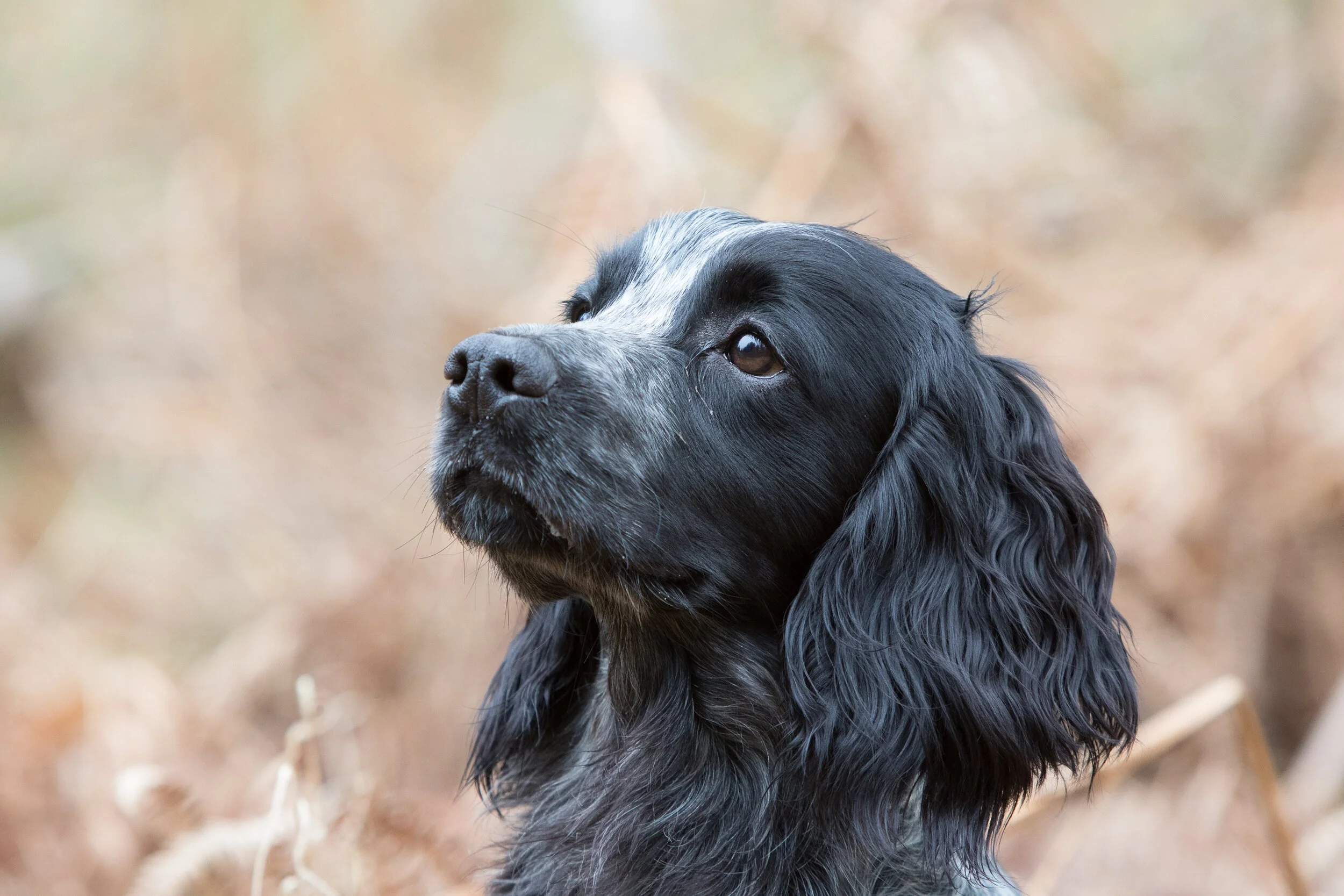Have cockers changed?
Over the last 25 years that we have had cockers a lot of things have changed. There are now many, many more of them about, the “type” of cocker has changed, trials have changed, training methods have changed and the uses that cockers are put to have changed. However, at the risk of sounding like a dinosaur, I am not sure that all these changes are for the good.
When we got our first cocker there were very few advertised in the press and most were sold by word of mouth. We got ours through a colleague I worked with. They were priced the same as Springer and Labrador pups and ours came with fleas thrown in for free! On many shoots they were virtually unknown and entries to trials were fairly small. Now there are pups advertised everywhere with pages and pages on the internet and pups priced at £600 and upwards, and it is unusual to go on a shoot without at least seeing two or three. The Cocker Championships used to be run with around 15 or so dogs, the first one that I ran in had 18 dogs in it. The 2014 Cocker Championship had 40 runners, a dramatic increase. There are now numerous novice stakes, some with over 50 dogs entered into the draw.
Looking through some old field trial cards the other day I found one for a trial that I ran in on 11th August 1994. Of the 16 dogs running that day, four eventually became Field Trial Champions, another won an Open Stake and four others went on to win Novice Stakes. Two of the bitches running that day in turn produced offspring that became Field Trial Champions. Even though fewer dogs were on the field trial circuit in those days, that is still a very good strike rate. It would be very unusual to see that these days. I am constantly told that the standard now is better than it has ever been (often by people fairly new to trialling) and whilst a lot of people will disagree with me, I am not convinced.
Training methods have changed drastically. Now there are as many training methods as there are “trainers”. Newcomers are bombarded with terms such as “positive reinforcement”, “operant conditioning”, “clicker training”, “boards”, “electric collars”, “forced retrieving” etc. There are numerous others. Where dogs used to be trained by encouraging and channelling their natural abilities with discouragement/punishment when they exhibited unwanted behaviour, there are now numerous methods depending on whom you talk to. Whilst I am not decrying modern methods or advocating harsh old methods, I do wonder sometimes whether we are manufacturing dogs rather than selecting for raw ability. If we look at the racing industry there are interesting parallels. Despite massively improved nutrition, training methods, training facilities, veterinary advice, physiotherapy and racing facilities, I heard the other day that the actual speed of thoroughbred racehorses has not increased over the last 50 years. That has to be taken in context as an industry where breeding and pedigrees are taken to a level way above what is done in the dog world. Should we therefore presume that cockers have improved so radically over a much shorter period?
Linked to the perceived improvement or not of cockers is the matter of breeding. As I mentioned earlier there are now many more cockers about and many more litters being bred. However, another look back at the card for that trial in August 1994, reveals that with the exception of one Championship winner that had sired two of the runners, the other 14 runners were all sired by different dogs. Eight of the dogs were sired by dogs that were not Field Trial Champions and although some of the dogs running were similarly bred, there was a large variation in the breeding of the dogs. A look at cards for novice trials over the last two years shows something very different. It is not unusual to have close to two-thirds of the runners sired by just two Field Trial Champion dogs and the rest would more than likely be similarly bred to each other. Lots of the pups now being bred are sired by Championship winners or popular Field Trial Champions and we have the strange situation where although we have many more cockers about, we risk losing the diversity that the breed was always well known for.
I would not disagree with the fact that the standard of training has improved but I have yet to be convinced that the standard of hunting, marking and line taking are drastically better. The more you train the more you risk suppressing the natural abilities of the dog in such tasks as hunting and marking and there is a possibility that the degree of training is now covering up deficiencies in other areas. There is no doubt that much more is asked of dogs in novice trials in such aspects as handling onto blind retrieves but it would be interesting to compare the hunting of the older dogs to the ones around now.
The purpose of this article is not to be argumentative or to say that things were much rosier in the past, but I do wonder with so many cockers about, many not destined for the shooting field but for activities such as agility, flyball etc and the huge shift in emphasis in training, where the future of the modern cocker lies. The “type” of cocker has also changed radically with many of them now wiry, base narrow and very quick. Some pet owners/new owners in the shooting field may even say hyperactive and although these may excel in the trialling world, they may not be ideal for the “average shooting man” – but that is a discussion for another day.

